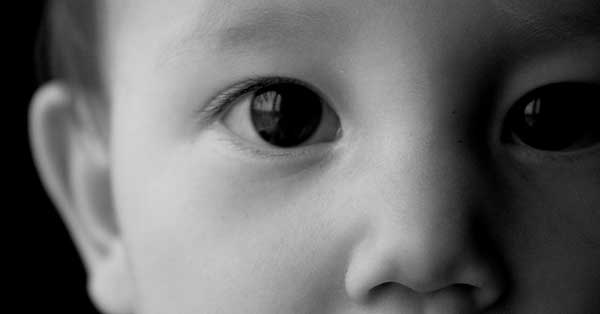
Until the 17th and even 18th centuries, our eyes were thought to emit beams of light, which in turn illuminated anything that passed before them. When the narrator in John Donne’s “The Ecstasy” locks gazes with his beloved, he describes the way “Our eye-beams twisted, and did thread / Our eyes upon one double string.” The reflections each saw in the other’s eyes, arising as they did from bodily emissions, were described as a form of “propagation.”
Our modern understanding of vision reveals more than a few flaws in the theory, but it nonetheless captured something very powerful: eyes, and particularly eye-contact, can be intense.
We are drawn to eyes from the start. Even as newborns, we prefer open eyes to shut ones, direct gazes to averted glances. In our first days of life, we are already taking the first, rudimentary steps toward following the gazes of others. As very young children, we use this ability to engage in something called “joint attention” with our caregivers—ensuring that we look at the right thing when they say There’s a doggy or Do you want that orange? Later in life our eyes can signal that we’re listening, or that we have something to say, or that there’s something scary right over there. With simply a wink, our eyes can say, Well hello, beautiful …
But in addition to helping us understand each other, eye gaze reminds us that we are the focus of someone else’s attention. Consider a 2006 study in which a team of English researchers took advantage of an “honesty box” that had been placed in the psychology department to collect payments for university-provided coffee and tea. When the researchers displayed a picture of a pair of eyes above the box, they found that their colleagues paid nearly three times as much for their beverages as when they displayed a picture of flowers. Feeling watched, even by a picture, seems to make us behave better.
Eye contact can make us self-conscious; does it also make us self-reflective? Recently, a team of French researchers led by Matias Baltazar showed participants a series of pictures intended to invoke a strong emotion: a gargantuan, fuzzy spider, for instance. But immediately before seeing the spider, participants saw a face. Sometimes this face was staring directly back at them; the rest of the time it was turned 45 degrees, eyes averted.
After viewing the pair of pictures, participants gauged, on a scale from one to 100, the strength of their emotional response. Then researchers compared this self-reported response to participants’ physical response, as measured by increased activity in their sweat glands. (Participants wore electrodes on their fingers.) When the eye contact was direct, their own assessment of their emotional response better matched their biological response. Knowing that we’re the object of someone else’s attention, it seems, puts us more in tune with ourselves—not unlike holding up a mirror, the researchers argue.

